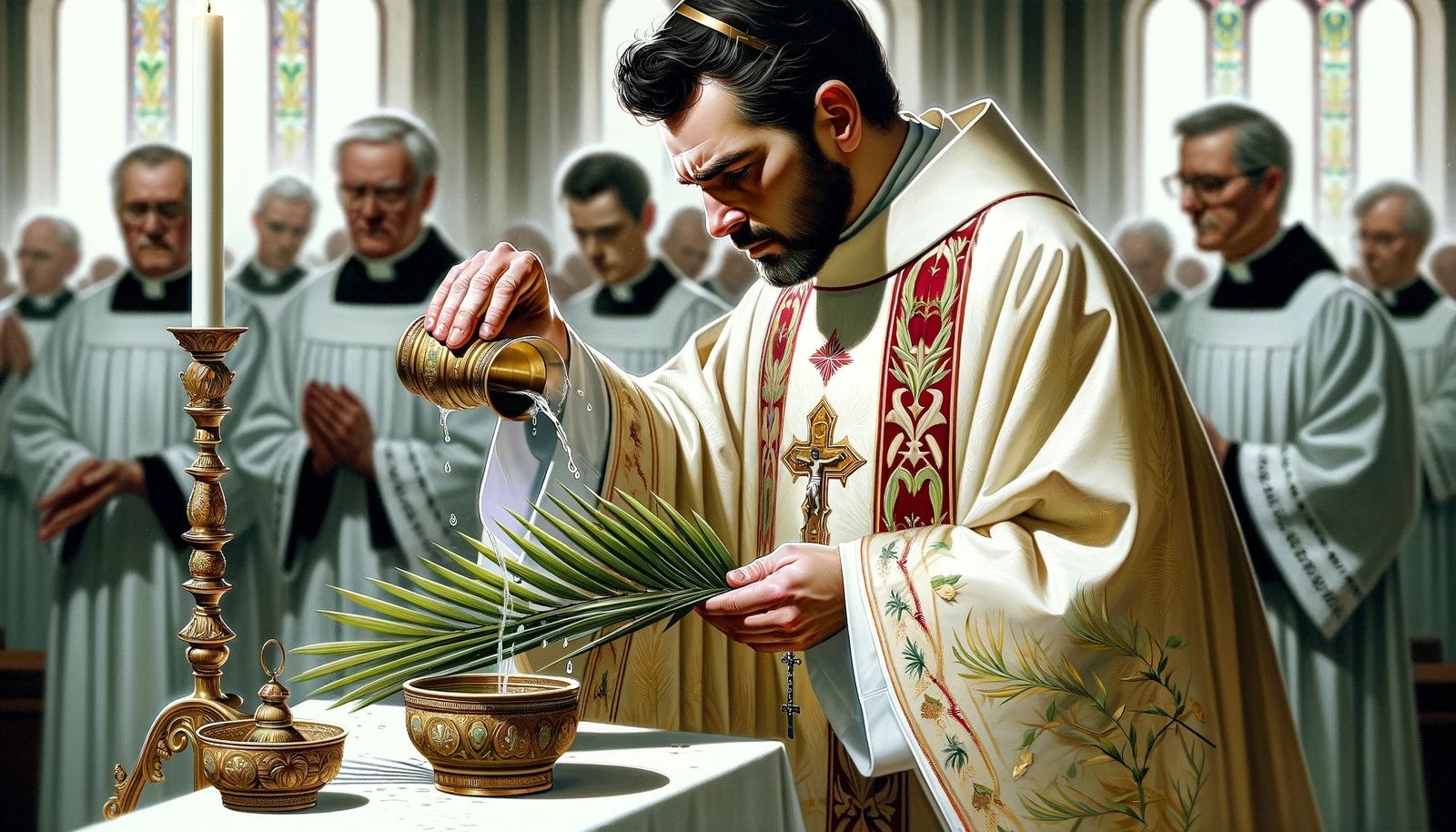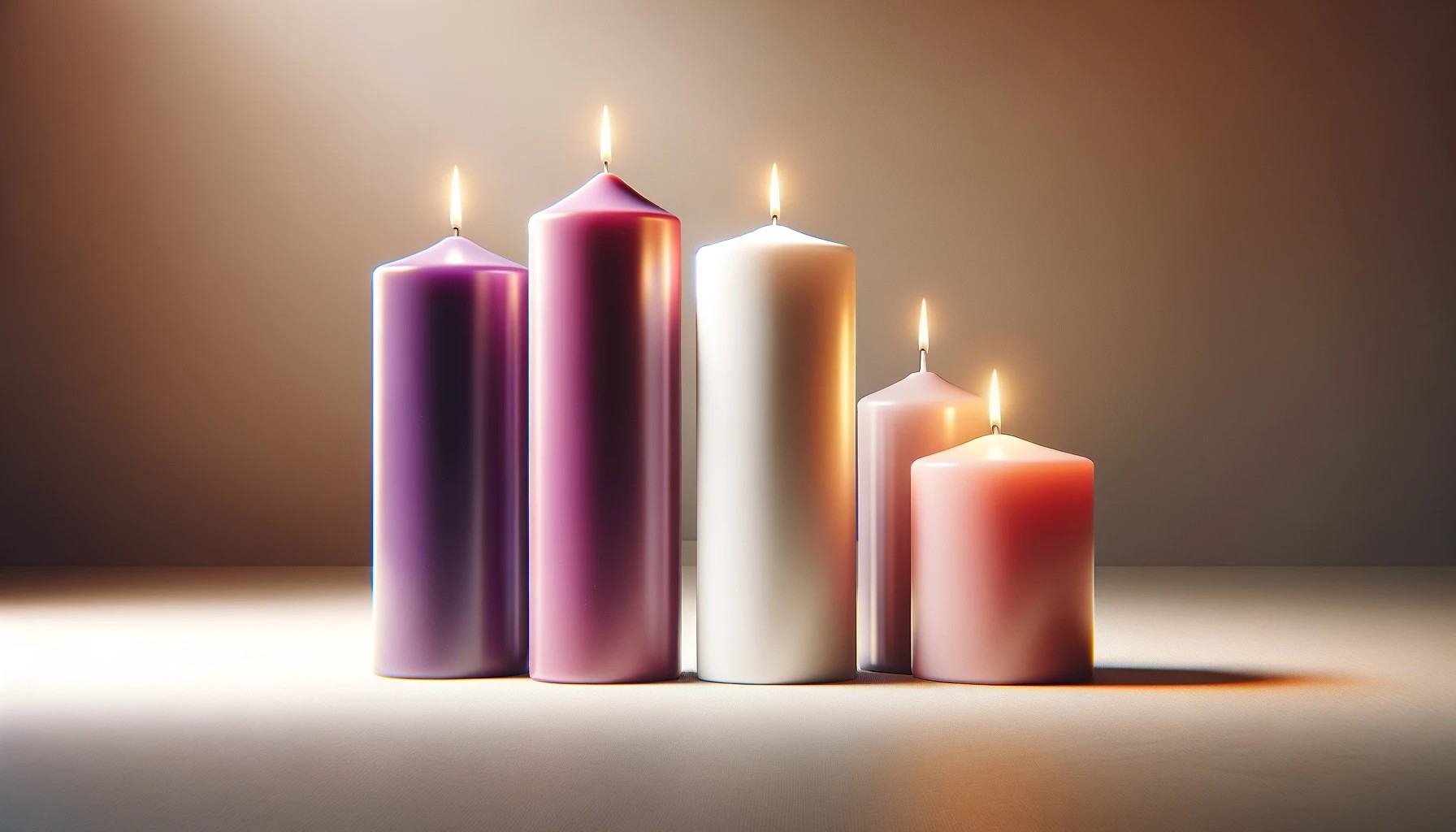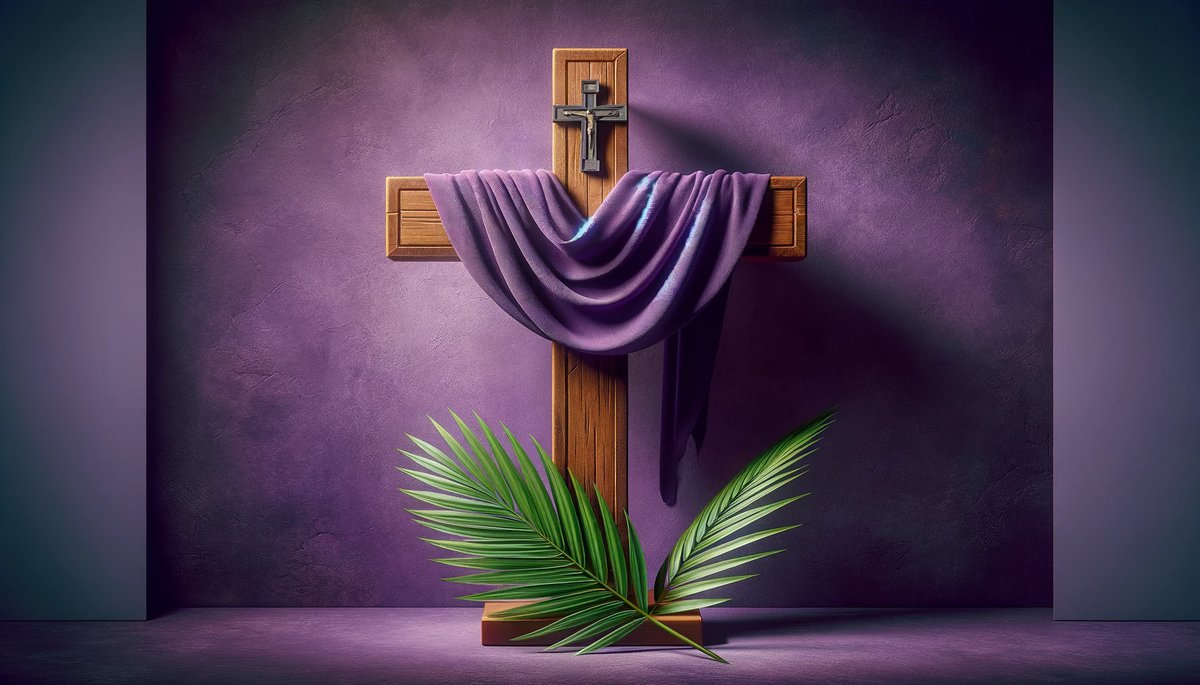Home>Theology and Spirituality>What Do Palms Represent In Catholicism


Theology and Spirituality
What Do Palms Represent In Catholicism
Published: February 15, 2024
Peter Smith, Editorial Director at Christian.net, combines deep insights into faith, politics, and culture to lead content creation that resonates widely. Awarded for his contributions to religious discourse, he previously headed a major organization for religious communicators, enhancing dialogue on faith's societal impacts.
Discover the significance of palms in Catholic theology and spirituality. Explore their symbolic representation and cultural importance in the faith.
(Many of the links in this article redirect to a specific reviewed product. Your purchase of these products through affiliate links helps to generate commission for Christian.net, at no extra cost. Learn more)
Table of Contents
Introduction
In Catholicism, symbolism plays a significant role in expressing and reinforcing the beliefs and traditions of the faith. One such symbol that holds deep meaning within the Catholic tradition is the palm. The use of palms in religious contexts dates back to ancient times and has been an integral part of Catholic rituals and celebrations. Understanding the symbolism and significance of palms in Catholicism provides insight into the rich tapestry of traditions and beliefs that define the faith.
The palm has long been associated with victory, triumph, and peace in various cultures and religions. In the context of Catholicism, the palm holds a special place as a symbol of the triumph of Jesus Christ and the peace that He brings to the world. The use of palms in Catholic rituals and ceremonies serves as a tangible representation of these profound spiritual truths.
Throughout history, the palm has been revered as a symbol of victory and honor. In ancient Rome, palm branches were often awarded to victorious athletes and soldiers as a symbol of triumph and glory. This association with victory and honor has carried over into the Christian tradition, where the palm has come to symbolize the ultimate triumph of Jesus Christ over sin and death.
As we delve into the symbolism and significance of palms in Catholicism, we will uncover the profound spiritual meanings that are woven into the fabric of this ancient tradition. From the use of palms in Catholic rituals to the profound significance of Palm Sunday, the presence of this symbol serves as a powerful reminder of the central tenets of the Catholic faith. Let us embark on a journey to explore the rich symbolism and deep spiritual significance of palms in the context of Catholicism.
Read more: What Color Represents Catholicism
The Symbolism of Palms in Catholicism
The palm holds profound symbolism within the Catholic faith, representing various spiritual truths and historical significance. In Catholicism, the palm is a symbol of victory, triumph, and peace, with its roots tracing back to ancient times. The use of palms in religious contexts serves as a tangible expression of these deeply held beliefs and traditions.
The symbolism of palms in Catholicism is deeply intertwined with the life and teachings of Jesus Christ. The palm's association with victory and triumph aligns with the narrative of Jesus' triumphal entry into Jerusalem, a significant event commemorated on Palm Sunday. According to the Gospels, as Jesus entered Jerusalem, crowds greeted Him by waving palm branches and laying them on the ground, symbolizing His triumphal arrival as the long-awaited Messiah.
Furthermore, the palm's symbolism extends to the overarching theme of victory over sin and death, central to the Christian faith. The use of palms in Catholic rituals and ceremonies serves as a visual representation of the triumph of Jesus Christ, emphasizing His role as the ultimate victor over the forces of darkness and the harbinger of peace and salvation.
Moreover, the palm's symbolism is not limited to historical events but also encompasses the spiritual journey of believers. It serves as a reminder of the ongoing triumph of faith over adversity and the promise of ultimate peace and redemption. The palm's enduring symbolism resonates with Catholics as a tangible representation of their faith and hope in the victory of good over evil.
In addition to its association with victory and triumph, the palm also symbolizes peace within the Catholic tradition. The waving of palms on Palm Sunday signifies the arrival of the Prince of Peace, Jesus Christ, who brings reconciliation and harmony to humanity. This symbolism underscores the central message of peace and goodwill that lies at the heart of the Christian message.
In essence, the symbolism of palms in Catholicism encapsulates the themes of victory, triumph, and peace, reflecting the core tenets of the faith. The use of palms in religious rituals and the commemoration of Palm Sunday serve as poignant reminders of the profound spiritual truths and historical events that form the foundation of Catholic belief and practice.
The Use of Palms in Catholic Rituals
The use of palms in Catholic rituals holds a significant place in the liturgical practices of the faith. Palms are prominently featured in various religious ceremonies and observances, serving as a tangible symbol of the triumph of Jesus Christ and the peace He brings to the world.
One of the most notable instances of palm usage in Catholic rituals occurs during Palm Sunday, the Sunday before Easter that commemorates Jesus' triumphant entry into Jerusalem. On this day, congregants are presented with palm branches, which are often blessed by clergy members during a special ceremony. The distribution of palms to the faithful is a symbolic reenactment of the crowd's gesture of welcoming Jesus into Jerusalem, laying down palm branches in His path as a sign of honor and reverence.
The blessed palms are then carried in procession, with the faithful waving them as a gesture of homage and adoration. This ritual reenactment of Jesus' entry into Jerusalem serves as a powerful expression of devotion and acknowledgment of His kingship and triumph. The use of palms in this context reinforces the central themes of victory and honor associated with Jesus' arrival, creating a deeply meaningful and visually striking experience for worshippers.
In addition to Palm Sunday, palms are also utilized in other Catholic rituals and sacraments. For instance, palms may be used during the sacrament of baptism, where they symbolize the spiritual victory and new life that believers experience through the cleansing waters of baptism. The use of palms in this context underscores the transformative power of the sacrament and the believer's entry into a new life of faith and grace.
Furthermore, palms play a role in the sacrament of confirmation, where they may be used as a symbol of the confirmands' commitment to their faith and the indwelling of the Holy Spirit. The use of palms in this sacrament serves as a visual representation of the spiritual fortitude and victory that believers receive as they are sealed with the gifts of the Holy Spirit.
Overall, the use of palms in Catholic rituals serves to enrich the religious experience of the faithful, providing tangible symbols that connect them to the central tenets of the faith. Whether in the commemoration of Palm Sunday or the celebration of sacraments, the use of palms in Catholic rituals reinforces the enduring themes of victory, triumph, and peace that lie at the heart of the Catholic tradition.
The Significance of Palm Sunday
Palm Sunday holds profound significance within the liturgical calendar of the Catholic Church, marking the beginning of Holy Week and commemorating Jesus Christ's triumphant entry into Jerusalem. This pivotal event carries deep spiritual and historical significance, embodying themes of kingship, victory, and the fulfillment of ancient prophecies.
The observance of Palm Sunday serves as a poignant reminder of the anticipation and jubilation that accompanied Jesus' arrival in Jerusalem. According to the Gospels, as Jesus rode into the city on a donkey, crowds greeted Him with exuberance, waving palm branches and laying their cloaks on the road as a gesture of homage and honor. This enthusiastic reception symbolized the recognition of Jesus as the long-awaited Messiah, fulfilling the prophecy of the coming King foretold in the Old Testament.
The use of palms in the reenactment of Jesus' entry into Jerusalem during Palm Sunday rituals underscores the enduring symbolism of victory and triumph. The waving of palms by the faithful signifies their acknowledgment of Jesus as the triumphant King, ushering in a message of hope, redemption, and salvation. This symbolic gesture encapsulates the collective joy and reverence of the faithful, as they join in commemorating the arrival of the Prince of Peace.
Moreover, Palm Sunday serves as a bridge between the joyful anticipation of Jesus' arrival and the solemn reflection on His sacrificial journey towards the crucifixion. The juxtaposition of exaltation and the impending suffering of Jesus underscores the profound paradox of the Christian faith, where triumph emerges from the depths of sacrifice and redemption. This duality of emotions and themes encapsulates the essence of Palm Sunday, inviting believers to contemplate the profound mysteries of faith and salvation.
The significance of Palm Sunday extends beyond historical reenactment; it serves as a spiritual invitation for believers to align themselves with the humility and triumph of Jesus. The symbolism of the palm branches represents an affirmation of faith, a declaration of allegiance to the victorious King who brings peace and salvation to humanity. As the faithful wave their palms in unison, they participate in a collective expression of devotion and adoration, reaffirming their commitment to the teachings and redemptive mission of Jesus Christ.
In essence, Palm Sunday stands as a pivotal moment in the liturgical calendar, encapsulating the themes of triumph, humility, and the fulfillment of divine promises. The observance of this sacred day serves as a powerful prelude to the events of Holy Week, inviting believers to journey alongside Jesus as He fulfills His messianic mission, ultimately leading to the transformative events of Easter.
Conclusion
In conclusion, the symbolism and significance of palms in Catholicism are deeply rooted in the historical narratives and spiritual truths that define the faith. The use of palms in Catholic rituals serves as a tangible expression of the triumph of Jesus Christ and the enduring message of peace and salvation that He brings to the world. From the symbolism of victory and triumph to the commemoration of Palm Sunday, the presence of palms in Catholic traditions serves as a powerful reminder of the central tenets of the faith.
The symbolism of palms in Catholicism encapsulates the themes of victory, triumph, and peace, reflecting the core beliefs of the faith. The waving of palms on Palm Sunday signifies the arrival of the Prince of Peace, Jesus Christ, who brings reconciliation and harmony to humanity. This symbolism underscores the central message of peace and goodwill that lies at the heart of the Christian message.
Furthermore, the use of palms in Catholic rituals enriches the religious experience of the faithful, providing tangible symbols that connect them to the central tenets of the faith. Whether in the commemoration of Palm Sunday or the celebration of sacraments, the use of palms reinforces the enduring themes of victory, triumph, and peace that lie at the heart of the Catholic tradition.
Palm Sunday holds profound significance within the liturgical calendar of the Catholic Church, marking the beginning of Holy Week and commemorating Jesus Christ's triumphant entry into Jerusalem. The observance of this sacred day serves as a powerful prelude to the events of Holy Week, inviting believers to journey alongside Jesus as He fulfills His messianic mission, ultimately leading to the transformative events of Easter.
In essence, the symbolism and use of palms in Catholicism serve as a powerful testament to the enduring legacy of Jesus Christ and the foundational principles of the faith. As believers continue to incorporate the symbolism of palms into their religious practices, they are reminded of the timeless truths of victory, triumph, and peace that form the cornerstone of their spiritual journey. The presence of palms in Catholicism serves as a visual and symbolic link to the rich tapestry of traditions and beliefs that define the faith, inviting believers to reflect on the profound spiritual significance of this ancient symbol.















